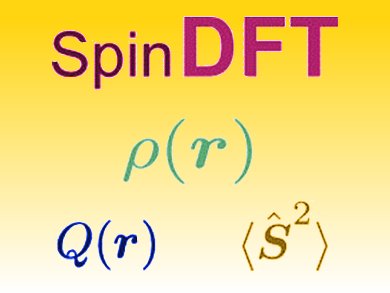Transition metal elements, in the unfilled d-block of the periodic table, exhibit a rich and complex chemistry. The existence of such incompletely filled d-orbitals with unpaired electrons, hence the term “open shell” systems is used, leads to a net magnetic moment for the system, or spin, which changes the chemistry of these elements in fundamental ways.
Open shell transition metal complexes and clusters often serve as active sites in (bio-)inorganic reactions, where a change in the spin state can be an essential step in the catalytic cycle. Other open shell molecules such as organic radicals can be used as spin probes in biomolecules and hold promise as building blocks for molecular spintronic devices, single-molecule magnets, and have shown potential to act as molecular qubits for quantum information processing.
Such varied applications make the precise role of spin extremely important to understand for chemists.
Modeling of Spin
For wavefunction-based methods, a multireference treatment is generally mandatory for a correct description of open-shell systems. However, the computational costs of these techniques scale very rapidly with the size of the system under study and thus place rather severe limits on the types of applications that can be modeled with these approaches. For large systems, such as polynuclear transition metal complexes and clusters, computationally more affordable, single reference, density-functional theory (DFT) based methods are therefore the methods of choice.
As explained by Christoph Jacob, Karlsruhe Institute of Technology (KIT), Germany, “currently DFT is often the only option for treating transition metal complexes, but accounting for open-shell systems within the DFT framework (henceforth called “spin-DFT”) also has large and often unsystematic errors, for instance, for predicting the energies of different spin states.” Due to such difficulties, the proper accounting of spin in DFT remains one of the important open problems in theoretical chemistry.
Closing the Knowledge Gap
Despite its importance, however, the theoretical foundations of Spin-DFT are not discussed clearly in the literature and the standard text books on DFT mention Spin-DFT only in passing. This fact motivated Professor Jacob and his colleague Professor Markus Reiher, ETH Zurich, Switzerland, to fill this knowledge gap with a tutorial review describing the fundamental theory behind Spin-DFT.
Recently published in the International Journal of Quantum Chemistry, this tutorial review introduces this topic in a way that is useful for the novice and advanced practitioner alike. Starting from a non-relativistic treatment of spin for a single electron, which is subject of many undergraduate texts on quantum mechanics, the authors move the discussion on the treatment of spin in both Hohenberg-Kohn and Kohn-Sham DFT frameworks. All the most popular options to account for spin-interactions, which involve very complex calculations in restricted and unrestricted formulations, are described and reviewed. For completeness, the tutorial also considers the situation in relativistic DFT where spin is no longer a good quantum number, and possible future directions for DFT applied to open-shell systems are outlined.
“Understanding the underlying exact theory is a prerequisite for developing approximation,” stresses Professor Jacob. Further developing of the theoretical framework is in fact a priority in the computational chemistry community, as modeling open-shell systems in DFT has still few open problems and its applications are currently limited from the inadequate state of presently understood theory.
- Spin in density-functional theory,

Christoph R. Jacob and Markus Reiher,
Int. J. Quantum Chem. 2012.
DOI: 10.1002/qua.24309
Article available free to read at http://tutorials.q-chem.org/
Also of interest:
- Spin states of (bio)inorganic systems: Successes and pitfalls,

Marcel Swart,
Int. J. Quantum Chem. 2012.
DOI: 10.1002/qua.24255




